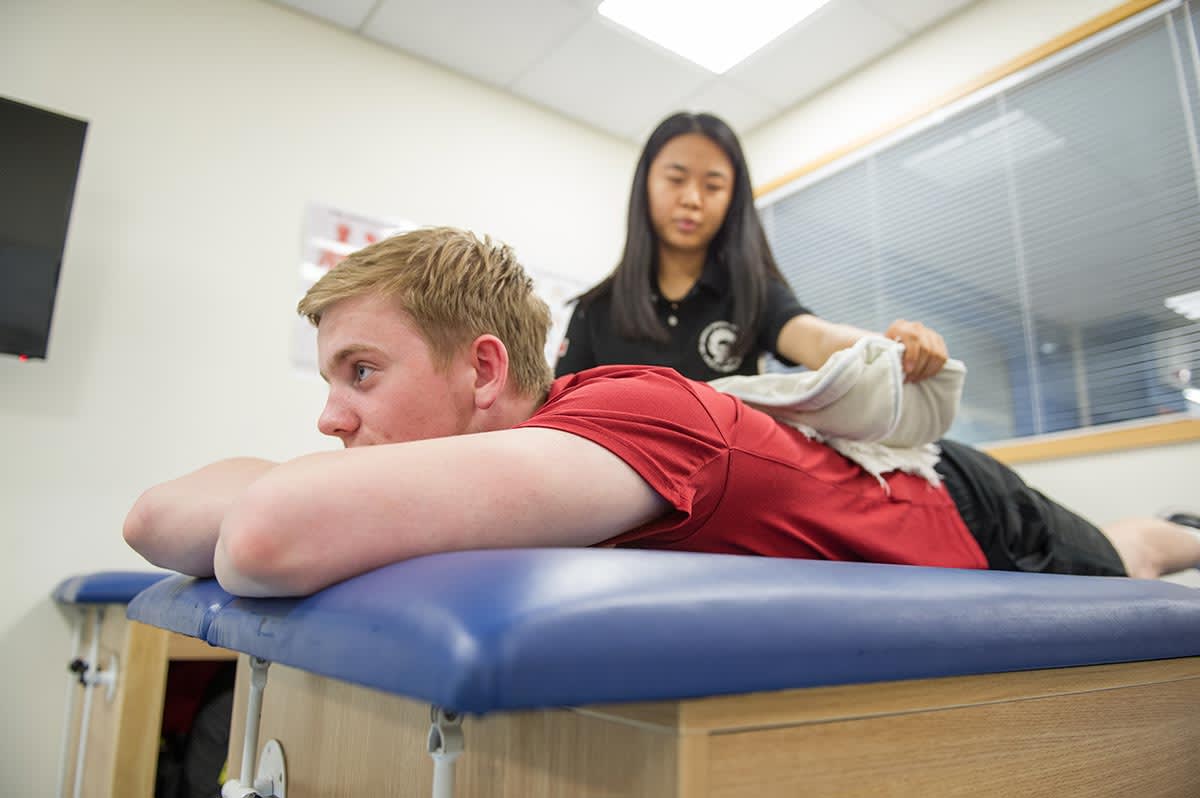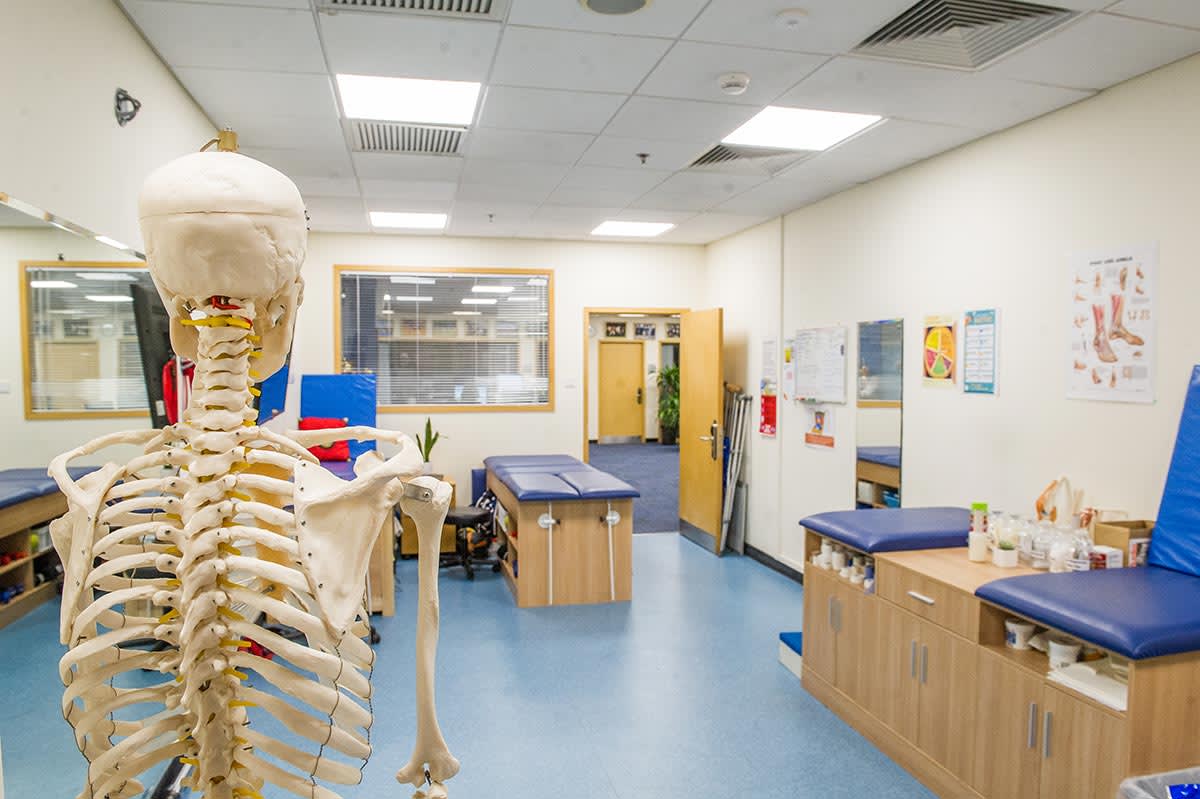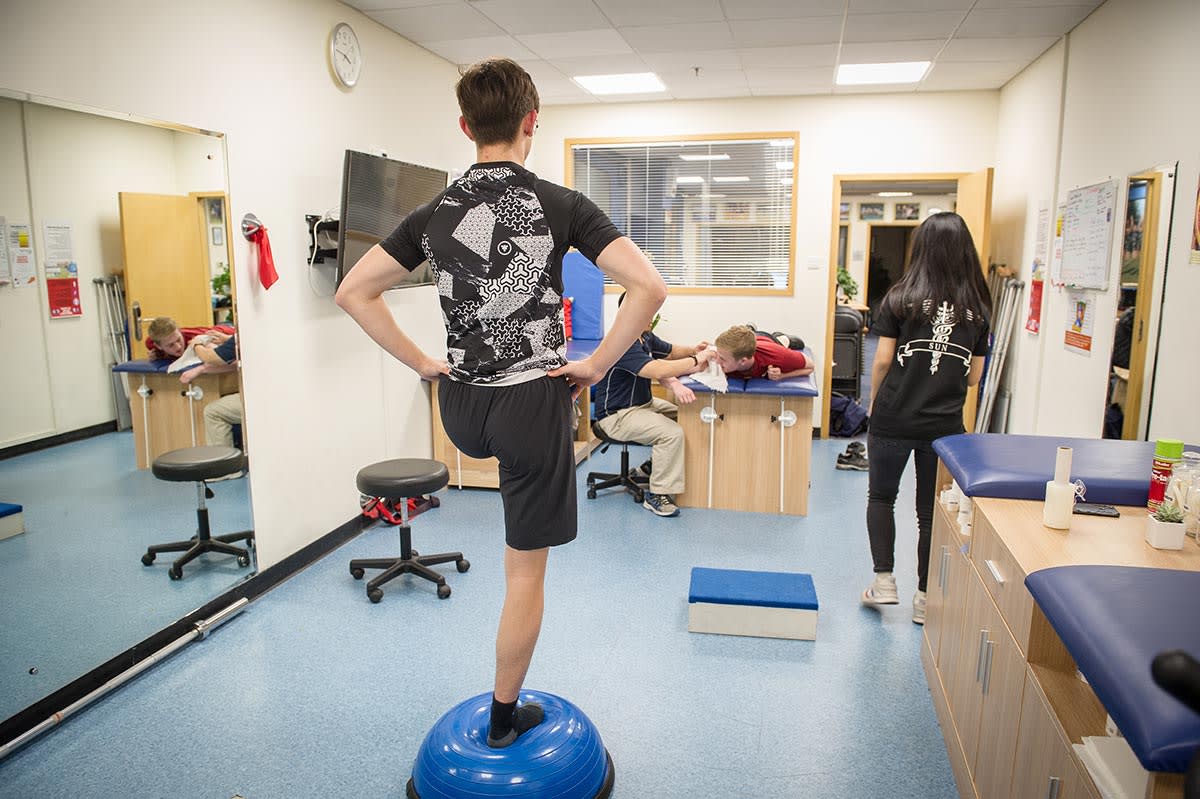10 tips to stay fit for sports
By Nick Yates, ISB Communications
Sporting life at the International School of Beijing (ISB) is in full swing after last weekend’s China Cup action. But as any athlete knows, injuries can be an unwelcome part of competing and pushing yourself physically. At ISB, students are prepared for that with coaching designed to raise awareness of conditioning and recovery.
The school has a dedicated athletic trainer in the shape of Randen Morisako, whose magic hands can heal any sporting strain and whose Sports Medicine Club is a hot ticket in the High School. One of his recent students, Niamh M, adapted what she learned around Mr. Morisako’s physio table and through her recovery from an injury to write a manual, “The Road to Recovery.”
Here are Mr. Morisako’s (numbers 1-7) and Niamh’s (8-10) tips to stay healthy, get over physical setbacks, and help keep the ISB Dragons breathing fire on sports fields.

1.) Warm up
A proper warm-up prepares your body, muscles, and cells for the upcoming stress of your intended activity. Increased blood flow to the tissues makes the muscles more pliable and delivers oxygen and nutrients to them. A dynamic warm-up utilizes controlled movement-based stretches to activate muscles and replicate movements needed for your activity.
2.) Focus on technique
This is a case of quality over quantity. Performing skills like throwing a ball, running, swimming, jumping, or kicking with proper technique is crucial. Being just a few centimeters or a few degrees off in your technique may put unnecessary stress on vital soft-tissue structures. Some examples are throwing a baseball with sidearm or landing from a jump with your knees caving in.
3.) Pre-season conditioning
Prior to participating in sports, you should make sure your body is physically ready to endure the demands of your intended activity. Is your cardio up to par to play a soccer game from the first day? Is your body strong enough to take hits in rugby? Is your arm ready to spike a ball?

4.) Off-season cross-training
Studies have shown that early specialization in sports such as swimming and baseball that require repetitive movements such swim strokes and throwing lead to a higher injury rate. By cross-training and participating in a variety of sports, you give your body time to rest from your main sport/activity and it trains other muscles that aren’t normally used.
5.) Cool down
A brief stretch and cool-down following activity will initiate the recovery process, allowing muscles to recover faster to continue training the following day. Stretching after a workout can limit the amount of lactic acid buildup that causes delayed onset muscle soreness (DOMS).
6.) Sleep
Maybe the most vital part of the recovery process. After a workout or activity, the body’s cells are overloaded and in some instances muscle fibers are stretched and torn. Sleep allows the body to rebuild cells bigger and stronger.
7.) Listen to your body
Perhaps one of the easiest tips in injury prevention is “listening to your body.” The body’s signal to your brain that something is not right is the sensation of pain. If you are feeling pain, that is a signal something is wrong and you must stop, take a break, seek help, or change your training. There is a fine line between persevering through discomfort and fighting through pain. It may be beneficial to be uncomfortable, but it is hardly ever beneficial to work through pain.

8.) Stay active
As rugby was a stress outlet for me, I struggled with the fact I couldn’t exercise on my feet for awhile. I focused on what I could do, like ab and arm circuits. This made me feel accomplished.
9.) Stay involved
I found that maintaining my relationships with my teammates helped me cope with my injury psychologically. Go to team dinners, hangouts, and the awards ceremony because despite being injured, you are still part of the team!
10.) Set goals
I made goals for myself when it came to rehab. For example, I would aim to complete sets of stretches three times a day. It is important that your goals are realistic; take it one day at a time.
ISB is an extraordinary school, made so by a tradition of educational excellence spanning 45 years. Establishing, nurturing, and growing such an exceptional learning community has been and remains intentional; we work hard to build strong relationships so our learning is at its best.
